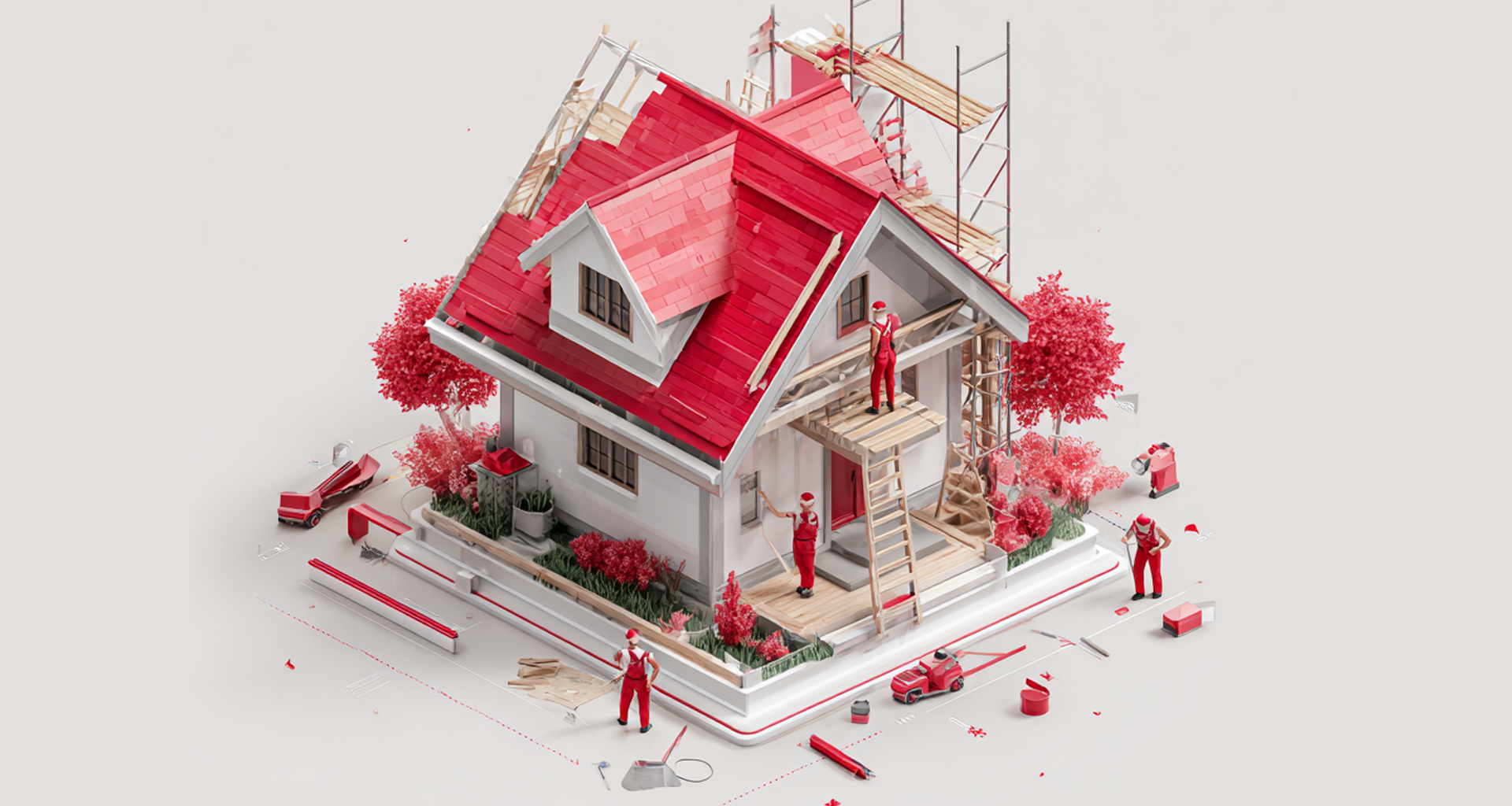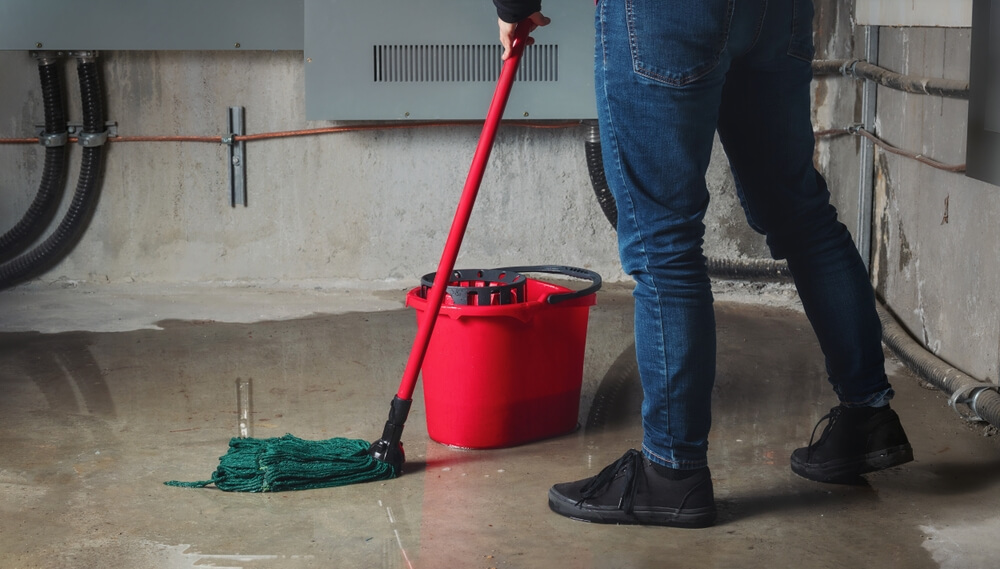
If you are not redirected within 30 seconds, please click here to continue.
Samedi: 10h – 16h HAE

If you are not redirected within 30 seconds, please click here to continue.
If you are not redirected within 30 seconds, please click here to continue.
Does your insurance cover the full replacement cost of your home?

How much it would cost to fully replace your home should something happen to it? And does your home insurance fully cover that cost? If you can’t answer these questions, you should find out - The last thing you want is to lose a home, or a portion of it, only to find out that you don’t have the coverage you need.
If this were to happen, the cost to you could amount to tens of thousands of dollars. In our current economy, when prices are at an all-time high, that may not be feasible for everyone. To make sure you’re prepared for this unexpected misfortune, make sure you know what you’re covered for.
What is the home rebuilding cost?
Home replacement cost – also known as replacement value – is the amount it would cost to rebuild your home from ground up to its original state following damage or destruction from a covered peril (such as fire or severe weather).
The amount would pay to restore the same components and structure as the original construction. No less, no more.
To figure out that cost, most policies break down your home into multiple components, such as your dwelling (as in, the house itself), detached structures (such as a garage or a gazebo) and personal possessions (your furniture, electronics, clothing and so on).
What’s excluded here is the value of the land itself, which has no impact on replacement cost.
If you’ve recently renovated your home in a significant way – by adding another garage, for instance – be sure to notify your insurer, as that could greatly impact your replacement cost.
Market value vs. home replacement cost: What’s the difference?
It’s important not to confuse your home’s replacement cost with its market value. Market value is the amount someone would pay to purchase your home in the current real estate market.
The key difference between market value and replacement cost is that it also includes your land – not just the home itself.
Land is valued differently, as it often incorporates factors outside the property itself, such as the quality of the neighbourhood, proximity to other places, such as stores or schools, as well as the climate in the area.
The value of the land may, in fact, overshadow the value of the structures on it. For instance, your home may cost $300,000 to rebuild, but its market value may be $600,000. The opposite is also true – your home may cost more to rebuild than its current market value. If it’s a lavish home in a remote area, its market value may be below its replacement cost.
The pitfall of using market value for insurance purposes is that it isn’t a good indicator of how much your home would cost to rebuild from scratch. The amount may be above your actual rebuilding cost or far below it.
Learn how your location impacts your home insurance here.
What affects your rebuilding cost?
Some of the major factor to play a role in determining your replacement cost include:
- Overall size of your home: The wider or taller your home is, the more it’ll cost to rebuild, as it would require more labour and construction materials. Smaller homes typically cost less.
- Construction materials: The higher the quality of your construction materials, including roofing materials, flooring and fixtures, the higher the cost.
- Location: Labour and material costs may differ from area to area. Local building codes may also have in impact on your rebuilding cost.
- Foundation and style: The kind of foundation your house is set on also impacts your home’s replacement cost. For instance, if it sits on a slab versus a basement, it will cost less. Conversely, if the home has complex design or style, it will cost more.
- Age of your home: If your home is older, it may have an unusual or unconventional structure (by modern standards) that is difficult to replicate. This can increase your replacement cost. Likewise, if your home has a complex electrical or plumbing system, it could also contribute to a higher cost.
- Personal possessions: Items like furniture, electronics and clothing can all increase your replacement cost.
How to find out how much of your replacement cost is covered
To know how much you are covered for, you’ll first want to know the actual cost of restoring your home to its original condition. One way of doing so is by consulting your insurer, or better yet, multiple insurers to see what they each come up with. You can also get an estimate from a professional appraiser or run all the calculations yourself by incorporating the above-mentioned factors.
Most insurance agreements will cover 80% of your replacement cost by default. The amount is negotiable, depending on how much you wish to pay in premiums. If your coverage is 80% and your home replacement value is $250,000, your policy would cover $200,000, which would be the limit of your coverage.
But what happens if the damage is below $200,000? Let’s say a hurricane damages your home and necessitates repairs valued at $60,000. Since this amount falls within your $200,000 limit, your insurance would cover 100% of the cost.
The story changes if you opt for less than 80% of coverage (which is not recommended). In this case, only the percentage itself would be covered – not the full amount.
For instance, if your coverage is 70% and the damage is $60,000, the payout would be $42,000 (70% of the cost). If you opt for 60% coverage, you’d get a payout of $36,000, (or 60% of the cost). And so on.
Coverage above 80% should adequately protect you in case the damage affects most of your home. If, however, you live in an area where homes get destroyed by floods or tornadoes, for example, you might consider coverage above 80% - though you would likely have to pay more on your insurance premium and opt for an overland water endorsement.
But if your area is relatively safe, then 80% coverage should be fine. So, weigh your risks carefully when deciding on the coverage.
Alternatives to consider
There are alternatives to your standard replacement cost coverage, such as:
- Actual cash value (ACV): This calculation method also accounts for your home’s depreciation – unlike standard replacement, which provides the full replacement value of your home. What this means is that your premium will be lower, but you’d have to pay more out of pocket in the event of damage.
- Guaranteed replacement cost: Unlike standard replacement cost coverage, this covers 100% of your total replacement cost. It’s full coverage for the entirety of your home. As you might expect, it commands a higher premium.
You next steps
Whether you already have a home insurance policy or you’re shopping for one, you should always pay attention to your home rebuilding replacement cost coverage. Evaluate and re-evaluate the cost of your home replacement and decide how much coverage you would like accordingly.
If your current policy doesn’t match your expectations, speak to your provider. If you’re not happy with your premium for the coverage you get, consider shopping for home insurance quotes, so you can compare. The latter is especially important if you’re about to purchase home insurance for the first time. You can shop for quotes here on RATESDOTCA. It only takes a few minutes.
Don't waste time calling around for home insurance
Use RATESDOTCA to shop around and compare multiple quotes at the same time.
Finding the best home insurance coverage has never been so easy!
Get money-saving tips in your inbox.
Stay on top of personal finance tips from our money experts!










